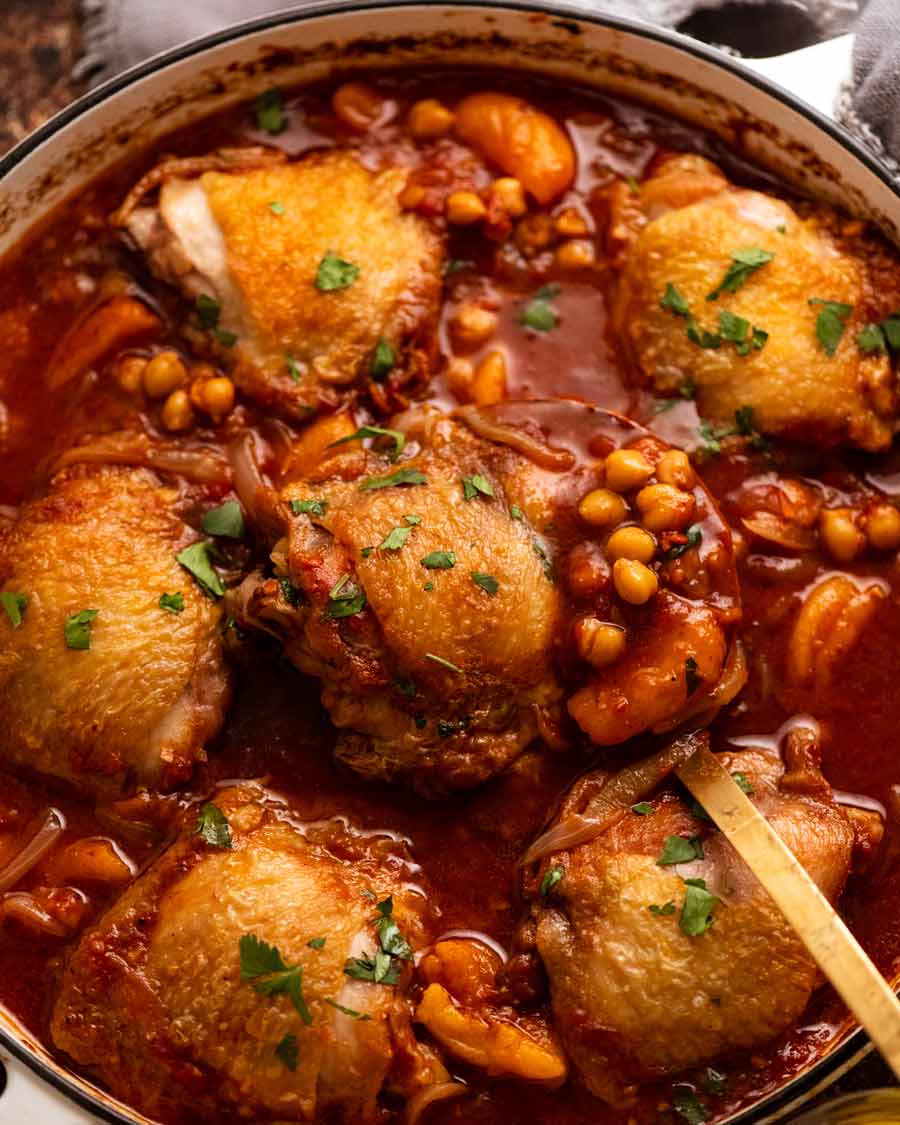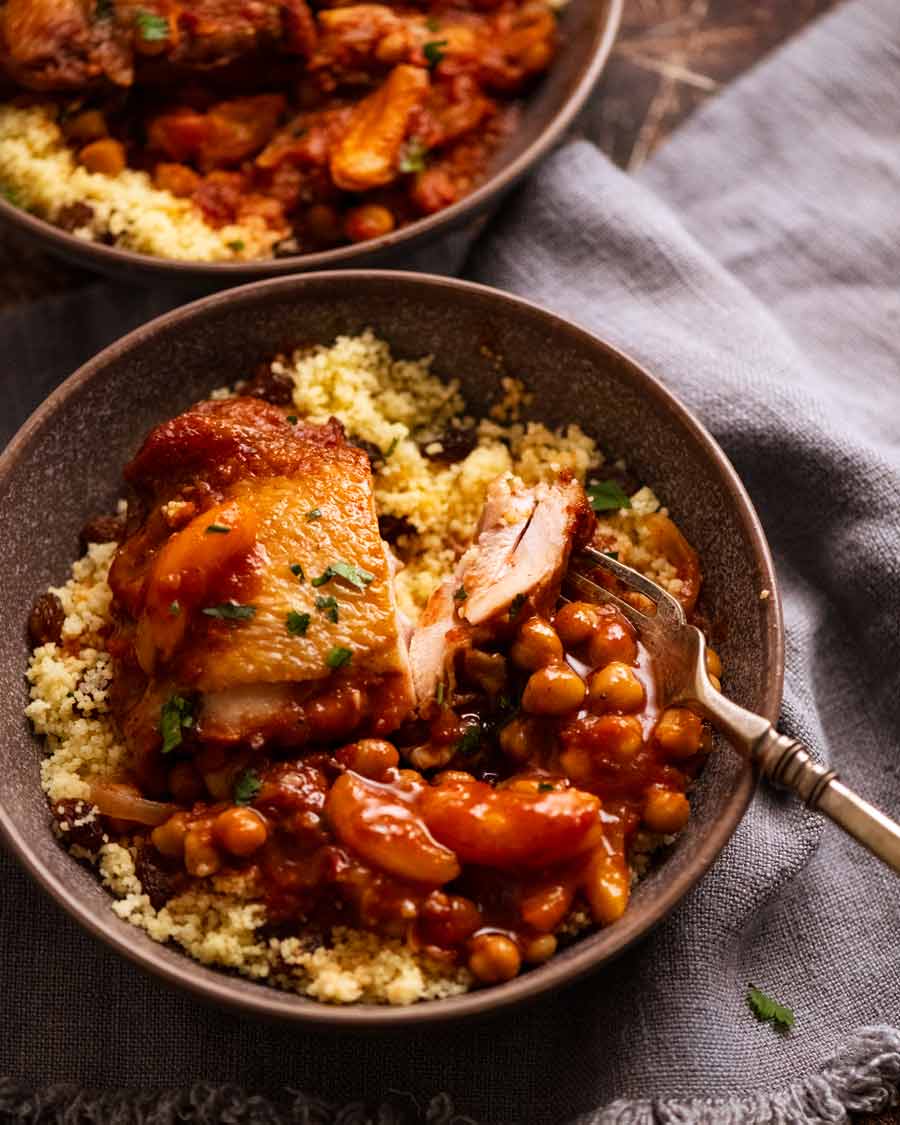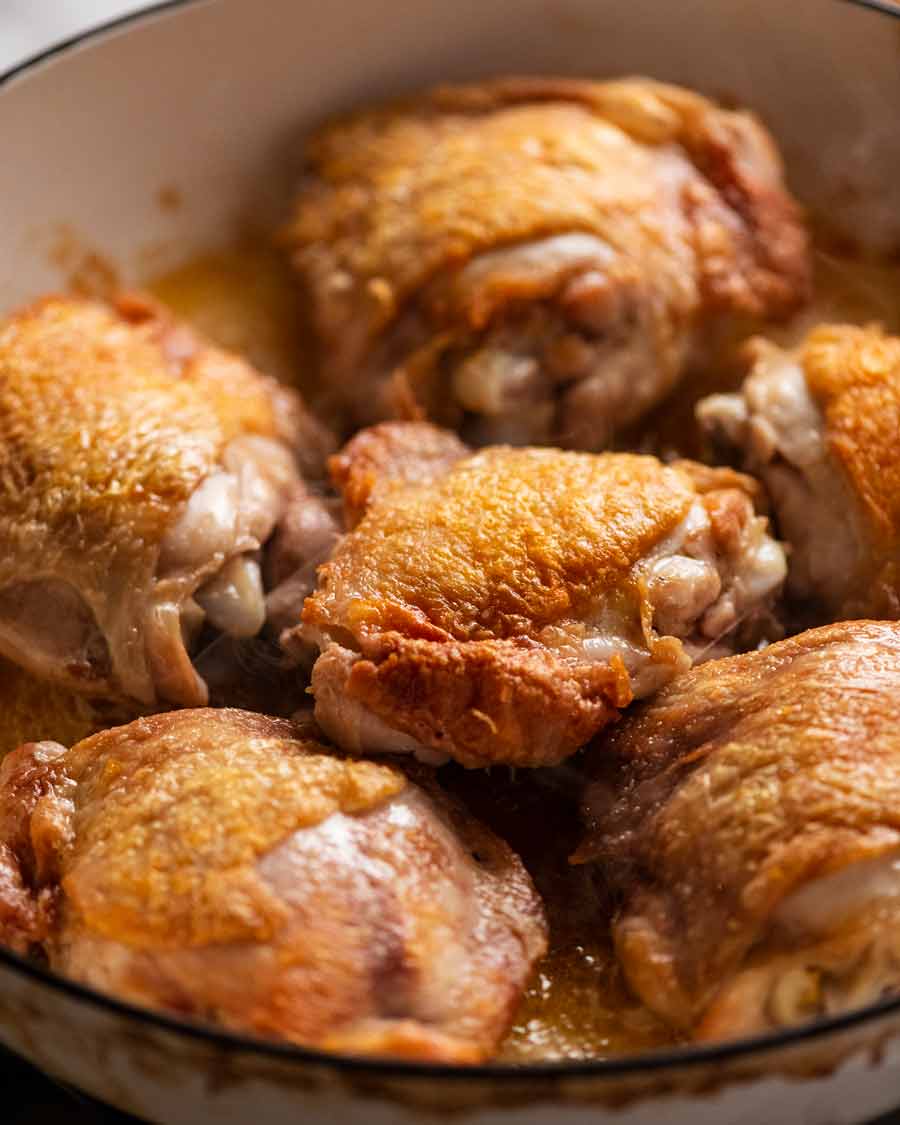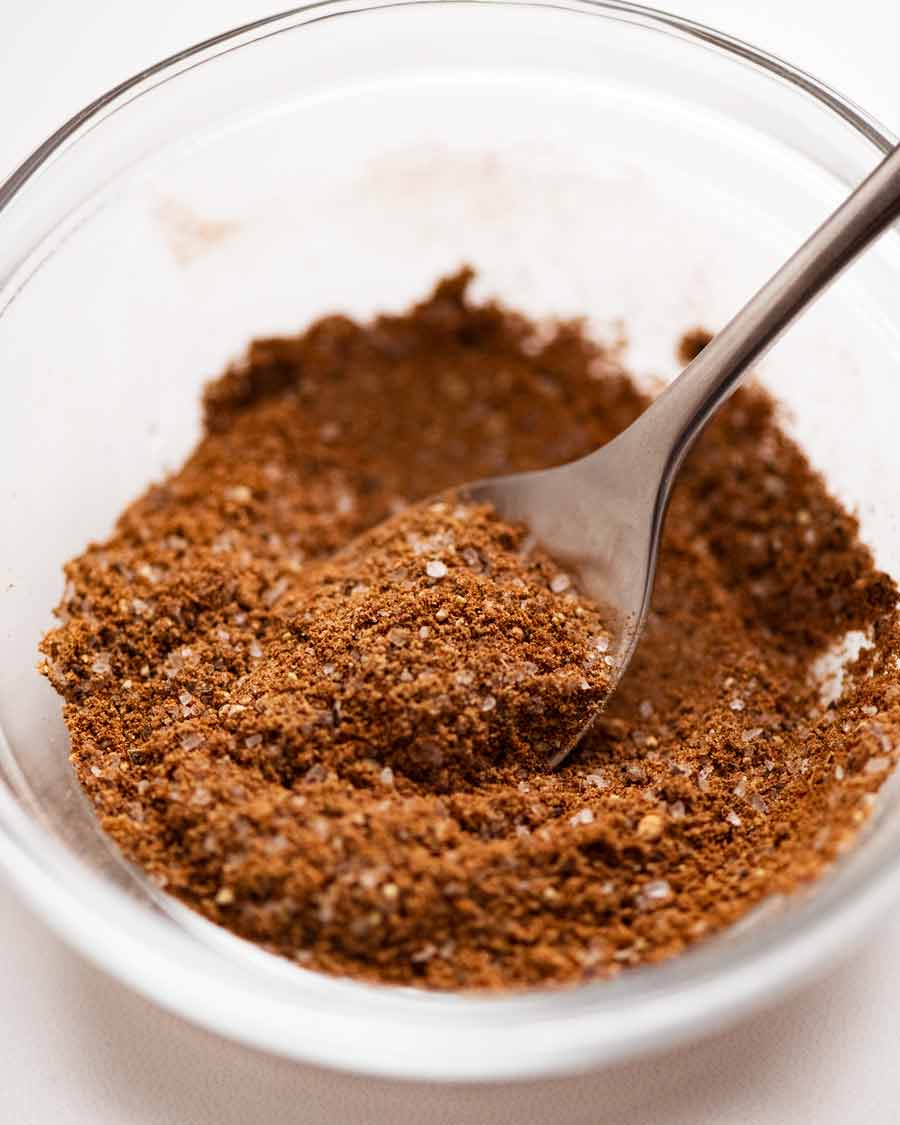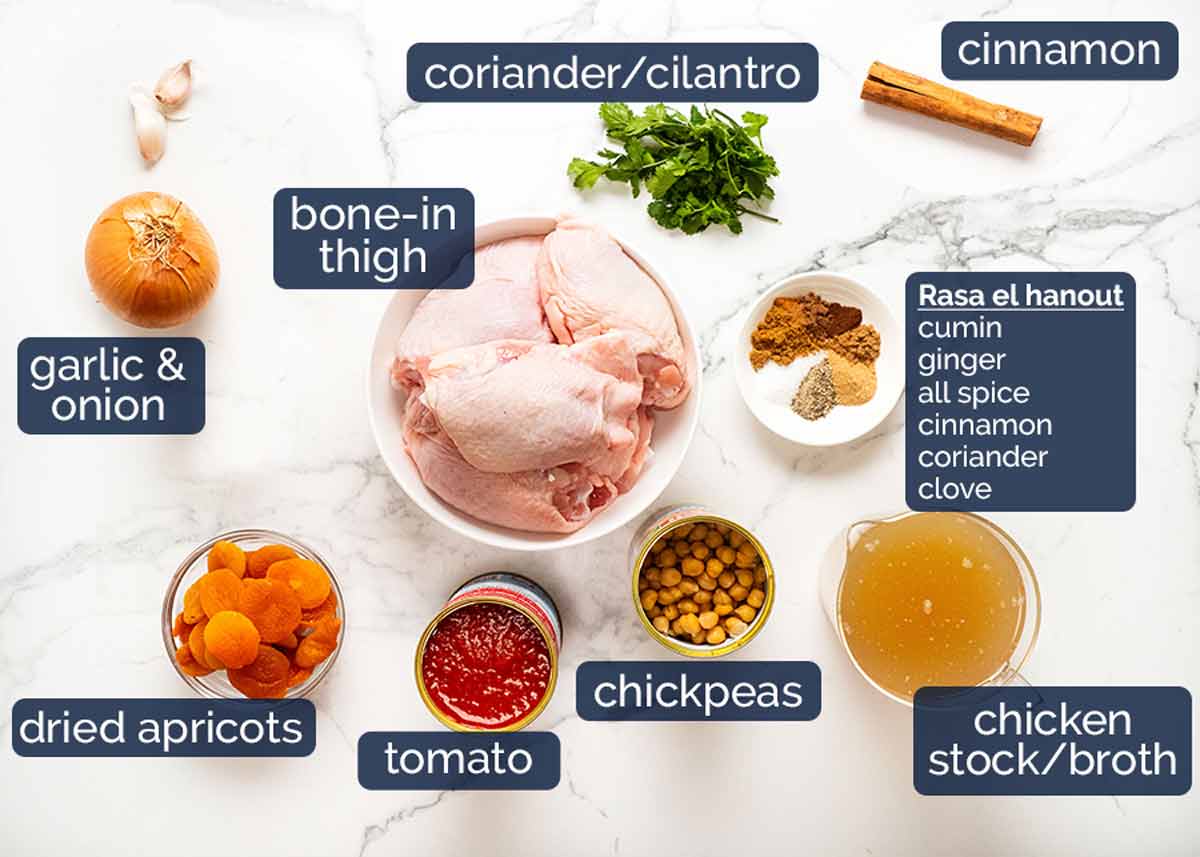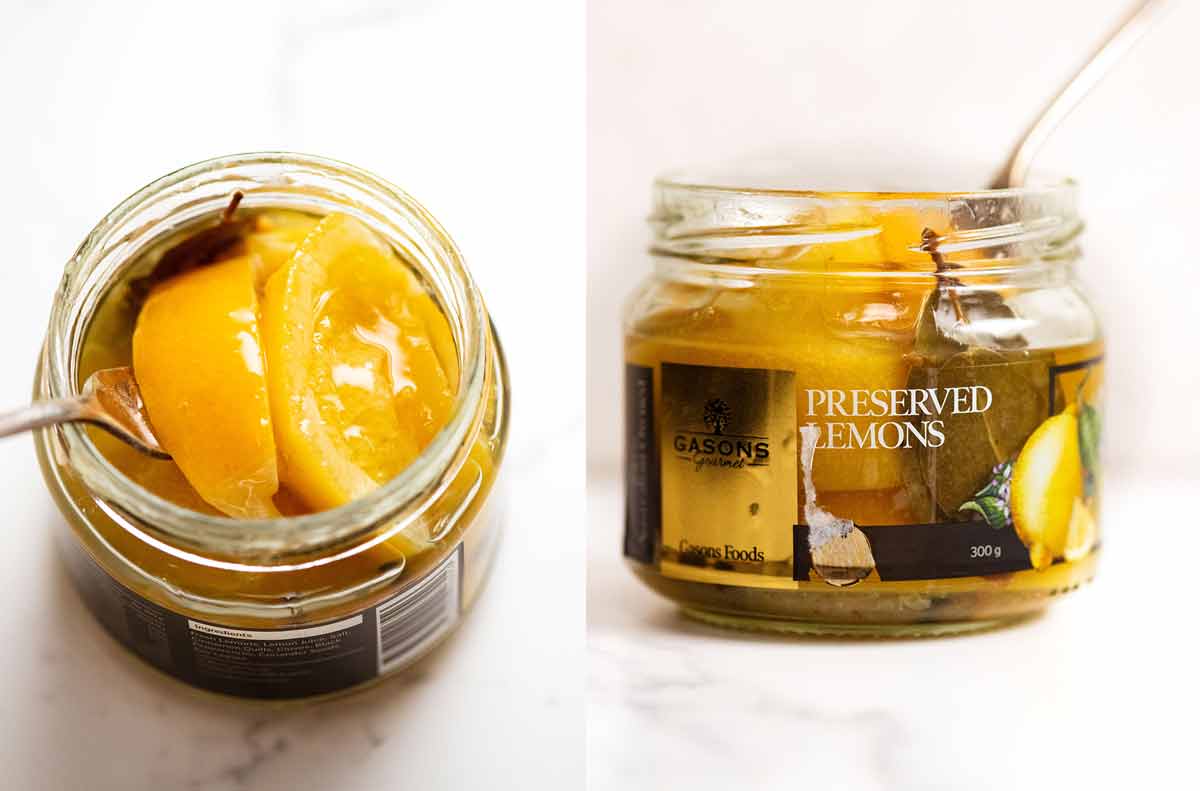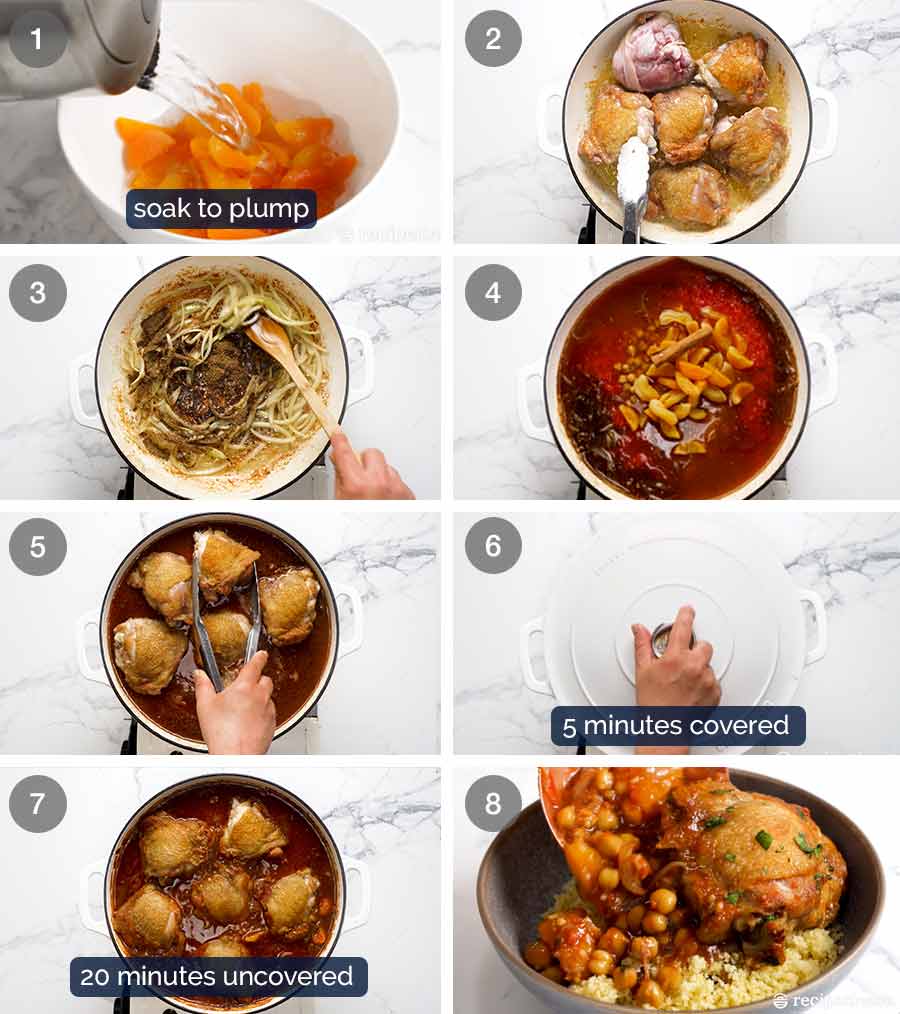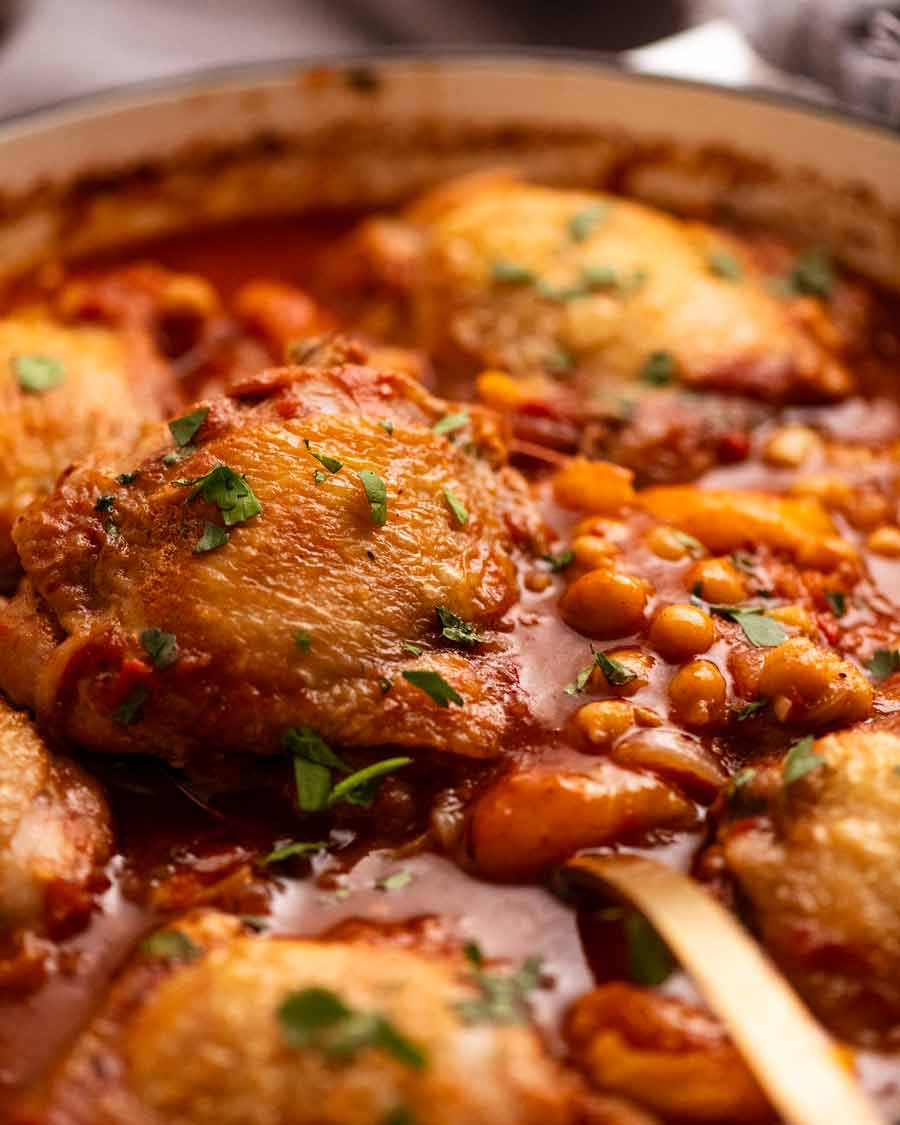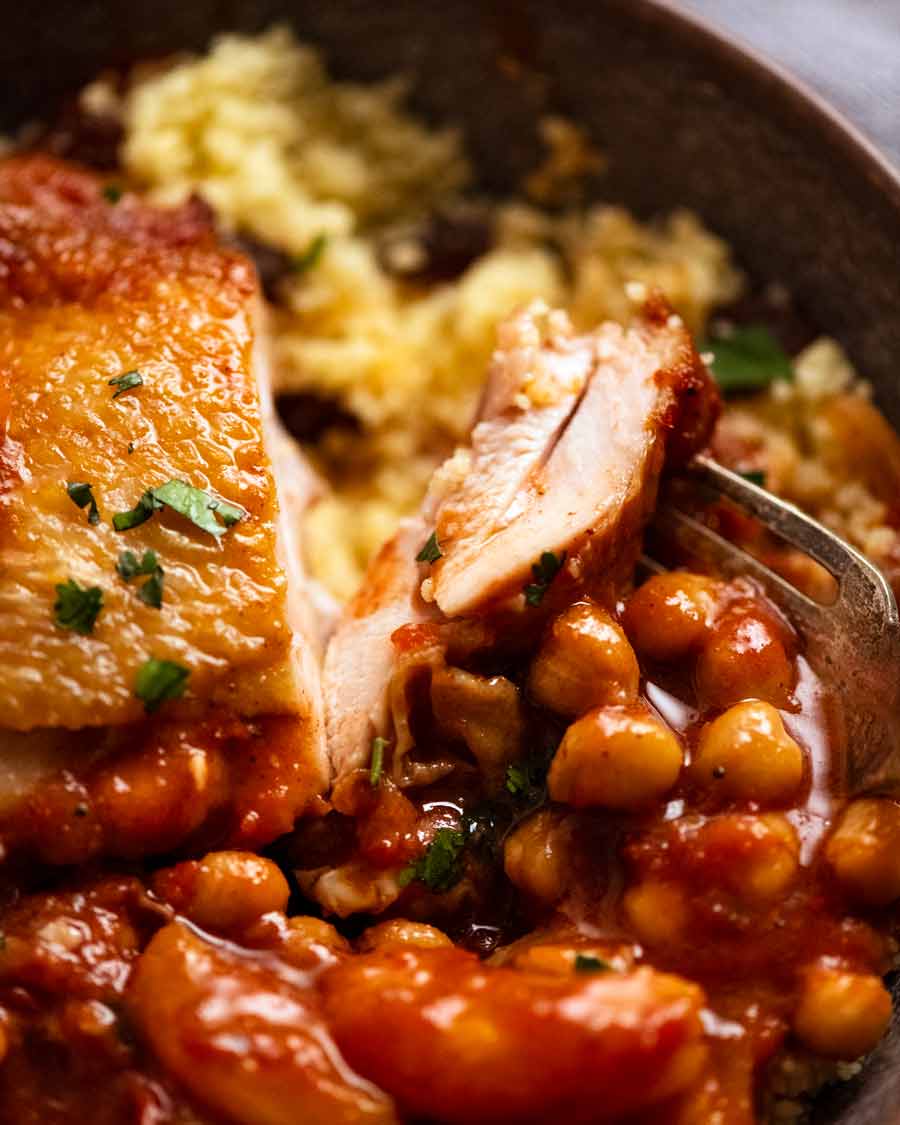After you’ve made this, try Vegetable Tagine. Meat-free deliciousness!
Chicken tagine
Tagine is a classic North African stew made with meats and vegetables braised in a gently spiced sauce. It is traditionally made in a conical-lidded earthenware pot called a tagine (from where the dish obviously gets its name!) A tagine’s lid is shaped so all the steam trapped in the dome drips back into the dish as condensation, keeping the dish moist as it slowly stews. There are many varieties of tagines. Meat, fish and all manner of vegetables can make their way into this stew. Nuts and preserved fruits like figs, apricots, lemon or olives are also often added to for flavour and interest. Today I’ve picked a Moroccan chicken tagine with dried apricots and chickpeas. And don’t worry! You don’t need an actual tagine to make this – we’re going to use a boring old pot! 😂
What goes in Chicken Tagine
The spice mix used in this Morrocan chicken tagine is Ras el hanout, a spice blend common in North Africa used in many dishes. While you can buy pre-made blends, the balance of flavours can be unpredictable from brand to brand. It’s so much better to make your own for a consistent outcome – and it’s cheaper too!
Bone-in skin-on chicken thighs are the best cut for a tagine because they are still juicy after the 25 minutes simmering time required to thicken the sauce and allow the flavours to develop.Chicken legs are a terrific alternative. Just follow the recipe as written. Boneless thighs and breast will work but the cook method is best altered to add them back in partway through the sauce simmering time else they will overcook. I’ve popped directions in the notes. 🙂Ras el hanout – The spice blend for tagine, made with common spices you may already have! You can buy blends but I prefer to make my own to get the right balance of flavours. The nice thing here is that because we’re using a fair few different spices here, it’s not the end of the world if you’re missing one … or even two. I’ve offered a few switch-out options in the recipe notes!Cinnamon stick – Added to the sauce as it simmers for a beautiful perfume and flavour. I love the scent cinnamon this adds to the dish!Dried apricots – As mentioned earlier, some versions of tagine are made with olives, others use dried fruit, other still may use both. I’ve opted for fruit because it’s one of the few dishes I love that pairs fruit with meat! However I am personally not really a fan of both dried fruit and olives together – it’s just a little too much, I find. Let one or the other shine, I say! However, the recipe includes the olive option too.Chickpeas – Chickpeas add some more heft to the dish. I just use canned for convenience but I’ve popped directions in the notes for cooking dried. Other beans, like cannelloni and butter beans, make fair substitutes, as do lentils.Garlic and onion – Essential for the sauce flavour base. It’s rare to see saucy recipes on this website that don’t start with these!!Canned tomato – For the sauce base. Not strictly traditional but I love how it thickens the sauce so it clings to the couscous better. Without, the sauce is very watery in consistency. While traditional tagines are supposed to be like that, I prefer a stewy sauce!Chicken stock – To add depth to the sauce. If you just use water, you’ll find the sauce a bit bland.For convenience, I typically use store-bought but homemade chicken stock would take this to another level. Also, vegetable stock would be a good substitute.Coriander / cilantro – A fresh garnish. Recommended, but not a deal-breaker if you’re one of those people who can’t stand coriander. Or if the price of coriander has sky-rocketed to dizzying levels lately, as it has here in Sydney due to extreme weather conditions! 😭
Preserved lemon – An ingredient used in Moroccan and some Indian cooking that is often used in traditional tagines. Accidentally omitted from the ingredients photo above, so I’m giving it air time with a big photo! 😂Preserved lemon is lemon simply pickled in salt. The salt mellows the sharpness of the lemon juice and transforms the flavour remarkably, intensifying the earthiness of the lemon flavour in the zest.These days it’s fairly easy to find at large grocery stores in Australia (Coles, Woolies, Harris Farms) but don’t fret if you can’t find it. Tagine is still worth making without it!
How to use preserved lemon: We only use the rind as this is where all the flavour is! Take a piece out of the jar and scrape off the pith (white part of rind) and pulp using a teaspoon (it’s extremely salty and also bitter). Rinse the rind thoroughly under tap water to remove excess salt then finely mince it with a knife. Chicken legs are a terrific alternative. Just follow the recipe as written. Boneless thighs and breast will work but the cook method is best altered to add them back in partway through the sauce simmering time else they will overcook. I’ve popped directions in the notes. 🙂 However, the recipe includes the olive option too. For convenience, I typically use store-bought but homemade chicken stock would take this to another level. Also, vegetable stock would be a good substitute. Preserved lemon is lemon simply pickled in salt. The salt mellows the sharpness of the lemon juice and transforms the flavour remarkably, intensifying the earthiness of the lemon flavour in the zest. These days it’s fairly easy to find at large grocery stores in Australia (Coles, Woolies, Harris Farms) but don’t fret if you can’t find it. Tagine is still worth making without it!
How to make Chicken Tagine
Brown the chicken skin until golden, then braise in the spice-infused sauce. Simple!
What to serve with Chicken Tagine
Couscous
Tagine is frequently served over couscous. Plain couscous is fine though it’s really nice with a little sprinkle of dried fruit and/or nuts littered throughout, or a spritz of fresh lemon. You’ll find various flavouring options in the couscous recipe. Once the skin side is nicely browned, sear the other side for just 1 minute then remove. The chicken won’t be cooked through at this stage. We will finish cooking it in the sauce.
Other starchy vehicle options
Rice (white, brown, basmati), pearl couscous (the giant ones), quinoa and any other small-grain starchy things suitable for sauce-soaking make good alternatives. Even mashed potato or mashed cauliflower would be great. Just something to slop up all that delicious sauce! If you’re attempting the low carb thing, then Cauliflower Rice will work well too. Actually, I think the slight nutty flavour from roasting the cauliflower rice will go really nicely with Chicken Tagine!
Side Salad
I think a light, simple side salad is nice to pair with spice-infused dishes like Chicken Tagine. Some suggestions:
Shredded Red Cabbage, Carrot and Mint Salad (a regular at my Moroccan or Middle Eastern-themed meals)Leafy greens tossed with my Everyday Salad Dressing (an easy, anything-goes alternative) or Pomegranate Dressing (for more suitably exotic vibes)Cucumber Salad with Herb Garlic Vinaigrette
If you’re wanting to make more of an impact, try one of these:
Ottolenghi Green Bean Salad (I am literally obsessed with this salad!)Grilled Eggplant with Yoghurt SauceRoasted Pumpkin with Yogurt Sauce and Pine NutsGreat Roasted CarrotsRoasted Broccolini with Tahini Sauce (Ottolenghi recipe)
Or – find your own perfect side salad here. 🥬 Love to know what you think if you try this! – Nagi x
Watch how to make it
More Moroccan recipes
Life of Dozer
Who me? 👼🏻
